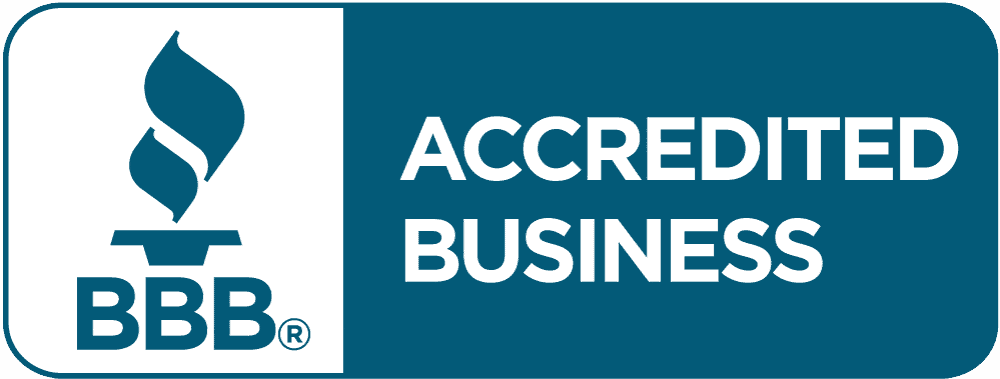Net Metering
Net Metering is a utility billing mechanism that offers credits to residential and commercial clients who generate electricity and “sell” it back to the grid. Net metering is most commonly used with solar PV systems, though could be applied with other renewable energy sources. Depending on what utility services your home or business, they may offer net metering or a plethora of other billing structures to reimburse you for excess solar energy. Of these different types of billing structures, net metering is the most common and will be the billing structure we go into depth about below.
How Solar Systems work with Net Metering
With your solar system turned on and producing electricity from the sun, you will be able to start taking advantage of net metering. But first, a clear understanding of how solar power works with your electric system. As the panels produce DC electricity, that power will be inverted to AC power in one form or another. This AC power is matched to the type of electricity used on the premise, likely 240 volt single phase for residential or 480 volt three phase for commercial. As the AC power from the solar system feeds the building, any loads on in the building at that time will receive electricity directly from the solar system. If the load is larger than the amount of solar being produced, the building will pull from the grid, if the solar is producing more power than the demand on the building, this excess power will be sent back to the grid.
When your solar panels are producing more energy than you are consuming and electricity is sent back to the grid, your electric meter will run in reverse and credits will begin to accumulate for your utility account.
When you are consuming more electricity than your solar system is producing, usually on days with inclement weather or at night, then you will be pulling electricity from the grid. You are then billed the net difference between energy produced from the panels and the energy consumed based on that month’s consumption and the amount of net metering credits that have been accumulated from solar.
Here in western North Carolina with Duke energy, the credits accumulated from the excess solar power are recycled to zero on May 1st of each year. These credits can be added or subtracted from your account at any point throughout the year and the May 1st recycle date requires a specific system design to take the most advantage of your solar system. Find below three examples of system designs that create different returns on investment and energy offset when on a net metering billing structure with solar.
Common Net Metering Scenarios
The following scenarios assume an average home consumption of 10,000 kwh per year,the national average. 2200 hours of usable sunlight in a year, the average for Asheville NC and is based on the typical situation for an all electric home where the summer and winter months are the highest use months due to HVAC for heating and cooling with electricity.
Scenario 1: Larger system, $$$, No monthly Bill, 110% energy offset, 12 year ROI
Some customers love the idea of zero monthly bills throughout the year. This is possible in the sense of having a zero dollar charge for consumption, but in no case is this possible for the bill to be zero because of the minimum connection fee. In regions of WNC serviced by Duke energy, it is $14 per month minimum connection fee for residential clients.
Minimum charges aside, getting a zero dollar charge for consumption throughout the year requires sizing a system’s production to 110% of the home’s annual electricity demand. In this case, a customer would pay more upfront for a larger system but would not have to worry about monthly consumption charges. The system will have to create enough excess credits from May through the summer and early fall months to get you through the high consumption, low production months of the winter. Then into the spring when the solar system picks back up on production and credits start to collect again. In this scenario, in order to never see an consumption charge on your bill, the account will always have excess credits available in May when the account sets back to zero and the credits are lost to Duke. This loss of credits back to Duke turns many clients away from going with a system of this size, though others are okay with it for the environmental and benefits that come with making electricity from the sun.
Yearly consumption – 10,000 kwh / year consumption
System size DC – 7kw DC
System size AC – 5.525 kw AC
System annual production AC – 12,155 kwh / year production
Scenario 2: Smaller system, $, some bills throughout year and larger bills in winter, 70% energy offset, 12 year ROI
A system of this size is a great option for someone with a smaller budget but still wanting to take advantage of the environmental, financial and energy independence benefits of going solar.
In this scenario, during the summer months, the solar will be at the peak of its production while the home may have a higher draw from air conditioning. In WNC, systems of this size are typically net zero during the hottest summer days when the sun is highest but the AC is running. Then on those cooler summer and fall days the system is net positive and builds up some credits but nowhere near enough to get through the coming winter months. We then see the sun hours decline and the use of heat go up. During these low production, high consumption months of winter, the home will quickly burn through any credits from the summer and have a consumption charge on there electricity bill through winter. These consumption charges will continue into the spring but as the sun rises in the sky and stays out longer each day, the solar system begins to create more electricity which offsets the lesser consumption of the spring months. A system of this size in no case will ever give away “free credits” to Duke and all the solar production will get to be used by the building.
Yearly consumption – 10,000 kwh per year consumption
System size DC – 4 kw DC
System size AC – 3.25 kw DC
System annual production AC – 7,150 kwh per year production
Scenario 3: Goldilocks system, $$, small bills in winter, 95% energy offset, 10 year ROI
The Goldilocks system is just the right size. A system that is designed to offset just a small percentage less than the buildings annual consumption. This allows for the credits racked up in the summer months to get you through the depths of winter. By the end of winter the bank of credits will be fully depleted at which time a small consumption charge on the utility bill will occur. This consumption is quickly offset again by the solar production that starts to increase come spring time but not enough energy is created to sell power back to the grid. The power produced in the early spring months is used on site and come May when the account sets back to zero there will be no credits for Duke to take for free. This allows the building to make full use of all the electricity generated by the solar system.
Yearly consumption – 10,000 kwh per year consumption
System size DC – 5.25 kw DC
System size AC – 4.225 kw AC
System annual production AC – 9,295 kwh per year production
Duke Energy Net Metering Program
“Net metering is a special metering and billing agreement between utilities and their customers that facilitates the connection of small, renewable energy-generating systems to the power grid. Customers are able to have their own renewable energy generator while also maintaining a reliable source of energy from the utility during times when their renewable generators are not producing energy.”
Rhino Renewables is a turnkey solar installer assisting our clients through the whole process of going solar. This includes working alongside Duke Energy to set up the interconnection agreement to have your utility account switched over to net metering.
Learn More about Duke Energy Net Metering Program here.
Net Metering when Solar and Batteries are both incorporated.
Grid Tied:
Grid tied systems are the most common type of solar systems in the Western North Carolina area. These solar systems are tied directly to the electrical grid and do not have a battery backup. Most importantly, this means when the grid goes down so does your solar system. This is the case for two main reasons. First, for the safety of the linesman working to fix the electrical grid. If your solar were to stay on it could send power back to the grid and electrocute these workers. Second, is the nature of how solar energy works. Because solar is always fluctuating with the time of day and weather, it is not a steady or reliable power source to run loads that need steady, consistent power.
That all said, a grid tied system is mostly installed for the financial and environmental benefits. These systems function with electricity from the solar panels produced during the day getting used in the building first with any excess power being sent back to the grid. During the night or times of inclement weather, the building will pull power from the grid.
Off-grid:
For a truly off-grid system, the home is not connected to the electrical grid. In this case, the battery system is the main electrical source the the home. With the batteries getting recharged from solar, a generator or another renewable power source, the home does not rely on net metering. All of the energy produced from the solar system is stored in the battery, used in the home or dissipated into a dump load such as a hot water tank.
Hybrid System:
A hybrid solar system both utilizes net metering and battery backup. When a hybrid system uses batteries as backup only, The system will use the solar energy to keep the batteries charged up to 100% to have max capacity if the grid where to go down. With the batteries full, solar power is then used in the home and any excess power is sold back to the grid for credits. . During regular grid operation, the system acts as a grid tied only system, sending power back to the grid and pulling power from the grid as the load in the home requires. If the grid where to go down, then batteries would be used to supplement electricity.
Self consumption
Self consuming solar systems are typically one in the same as battery backup systems, just that the programing of the controller operates differently. These systems are used for two main reasons. First, is to be energy independent from the grid so charging the batteries during the day from solar and cycling the batteries at night to pull power from the batteries. Second is for buildings that are charged time of use rates where higher electricity rates are charged at specific times of days. During these demand charge times the batteries are cycled to cover the load in the building so that power is not consumed form the grid.
Related Posts
Solar Power and Beyond: The Benefits of Adding a Battery Backup to Your System
Introduction: As the world embraces sustainable energy solutions, solar power has emerged as a popular choice for homeowners and businesses alike. Harnessing the sun’s energy...
Read MoreChoosing the Right Solar Program in North Carolina for You
Save Big with Duke Energy Progress and Duke Energy Carolina’s PowerPair Solar and Battery Incentives Are you considering switching to solar energy? Now is the...
Read MoreUnderstanding the Depreciation of Solar Energy Property in MACRS
In the ever-evolving landscape of renewable energy, businesses seek certainty and incentives to make impactful, long-term investments. One crucial aspect contributing to the growth of...
Read More





